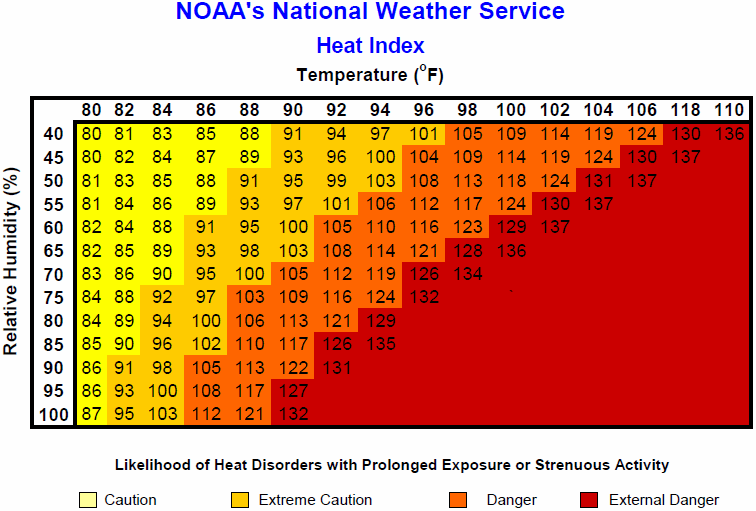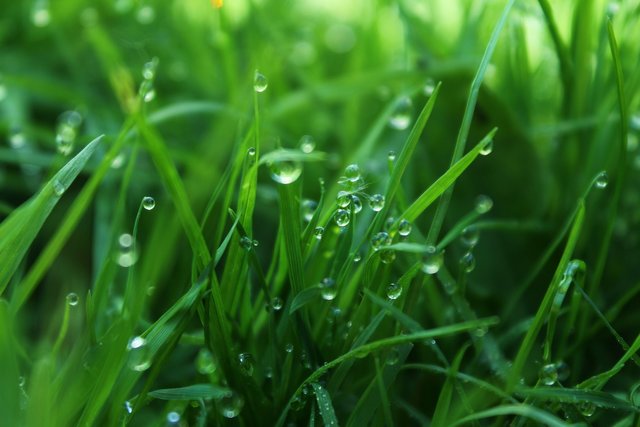If the air temperature was 32 °C with relative humidity of 60% in the afternoon, would it feel more uncomfortable to a person than if it was 24 °C outside with a relative humidity of 100% in the morning?
At 32 °C with relative humidity of 60%, it would “feel” like 38 °C, while at 24 °C with a relative humidity of 100% it would “feel” like 27 C. Despite the different values in relative humidity, the absolute humidity or dew point would be about the same in both these cases (about 24 °C). This “feeling” that combines air temperature and moisture is referred to as the “heat index”. [Ref. 1]

image credit
Assuming the dew point does not change, the relative humidity is usually highest in the early morning when the air temperature is coolest, and lowest in the afternoon when the air temperature is highest. [Ref. 2]
Does that mean that humidity increases for some reason in the mornings?
No! It means that the temperature decreases, so less water can stay evaporated in the air. If relative humidity reaches 100% of what that particular temperature can "hold", we have reached dew point and humidity begins to condense. This is why if you leave your already dried clothes hanging out at night, they might get wet again!
Is it possible for relative humidity to exceed 100%?
Yes, and the condition is known as supersaturation. This phenomenon is mainly observed in very high altitudes (25000 feet and above). The reason is that in these high altitudes there is nothing solid for water vapor to condense on, not even dust or salt particles. [Ref. 3]
We can observe water at such high altitudes suddenly condense when passing planes leave impurities (and additional water) into the cold air. Water will then condense and even freeze into ice crystals right away, leaving trails of fog behind the plane. These trails are called condensation trails, or contrails for short. [Ref. 4]

image credit
So does a 100% humidity always equal fog?
Not always. Fog also depends on other weather parameters, such as wind, temperature changes and temperature variation in a location, cloud cover and so on. Moisture might form a cloud instead and convert into rain, or it might just condense on vegetation and form dew. Fog usually forms if the air continues to cool down after reaching saturation, especially if enough impurities are in the air for the water to condense on. In the winter, when warmer humid air passes over a snow-covered area, it cools down, becomes saturated and fog is formed. [Ref. 5]
Fog can also form if the ground has been warmed up by the sun during the day, causing water evaporation, and the following night is cold, dropping the saturation point (dew point). This type of fog is more commonly observed in valleys because cold air sinks down, making it easier to reach saturation point. Some conditions such as wind or clouds will impede the formation of this type of fog. If it is windy, the wet ground air will mix with air from higher altitudes distributing the water vapor. This will also happen if the sky is cloudy, as the clouds keep heat trapped on the ground, thus maintaining a higher dew point. [Ref. 6]
Another type of fog that can form is when a warm, moist stream of air moves into a colder area during a hot season, as it can happen to evaporated sea water. This cools down the warm air to its saturation point, condensing it. The fog is again evaporated when the sun begins to warm it up again. [Ref. 7]

image credit
What is knowing the relative humidity useful for?
Relative humidity helps to compare locations, for example a location with 35 °C and 50% relative humidity and another location with 35 °C and 80% relative humidity. It helps predict, together with other weather conditions, whether there will be fog forming, and sometimes even rain. It also helps people know whether clothes hanged outside will dry fast enough, or how much we need to hydrate and water our plants, and even our bodies.
Our bodies produce water which evaporates through our skin and lungs. This is what regulates our body temperature, as evaporated water removes unnecessary thermal energy. A high relative humidity prevents our body from expelling this extra water since the air is close to saturation and it is hard for any more water to evaporate into the air. This is especially dangerous during the summer, because high temperatures overheat our bodies and we need to expel this heat through perspiration. This is the reason why a hot and humid weather is more likely to cause a heat stroke.
Can there be a 0% relative humidity on Earth?
On June 27, 2011, Las Vegas, Nevada reached a record dew point of -22 °F (-30 °C) with a temperature of 107 °F (42 °C) and a relative humidity of below 1%! This is the largest “dew point depression” ever recorded in Las Vegas, making it the driest day ever in its history. [Ref. 8] The dew point depression is the difference between the air temperature and dew point temperature, and in this case it was 129 °F (54 °C). It was also one of the world’s lowest recorded relative humidity. [Ref. 9]
An actual 0% is impossible, however. Water vapor is always present in the air, through oceans, lakes, rivers, ice, even the soil and vegetation. We have to keep in mind that air moisture largely depends on the type of vegetation cover. [Ref. 10] Once water vapor is in the air, wind will carry it everywhere, even in very small quantities.

image credit
So what are some of the highest dew points observed?
On July 19, 2011, Moorhead, Minnesota, measured a 88 °F (31 °C) dew point temperature. This was an all-time record for the highest reading ever observed in that state, and of the highest even in the United States! This most likely occurred due to the heat wave following a heavy rainfall that saturated the ground with water. Similarly, in July 13, 1995, Appleton, Wisconsin, the dew point was registered as 90 °F (32 °C) with an air temperature of 101 °F (38 °C), leading to a heat index reading of 148 °F (64 °C), perhaps the highest ever in the United States. The July heat wave resulted in the death of 750 people in the region. [Ref. 11]
More persistently high dew points can be observed in the hottest and most humid regions of the world: the coastal areas of The Persian Gulf, Red Sea and Gulf of Aden. Countries such as Somalia and Eritrea can have dew points over 80 °F (27 °C) as their hottest month’s average! Saudi Arabia recorded perhaps the highest dew point of the world on July 2003, which was 95 °F (35 °C). The air temperature at that point was 108 °F (42 °C), so the heat index was 176 °F (80 °C)!! [Ref. 12]
How does humidity distribute heat around the world?
Evaporated water carries with it the energy that keeps it, well, evaporated. A gram of water takes about 780 calories to evaporate, and that stays within the water vapor. When it condenses to fall as a rain or snow, this heat is released, warming up the environment. That means that the poles are perhaps slightly warmer than they would be otherwise. image credit With humidity, heat is more evenly distributed throughout the globe.


Being A SteemStem Member
Downvoting a post can decrease pending rewards and make it less visible. Common reasons:
Submit